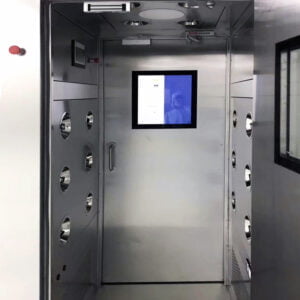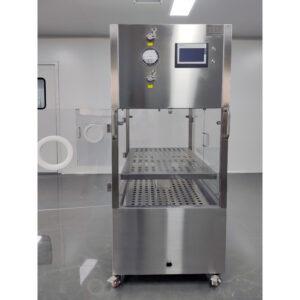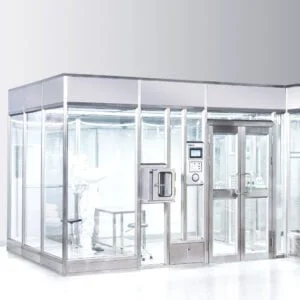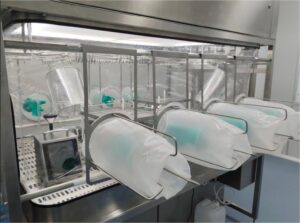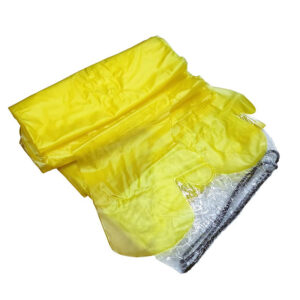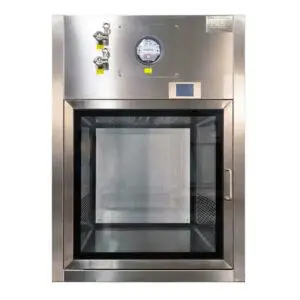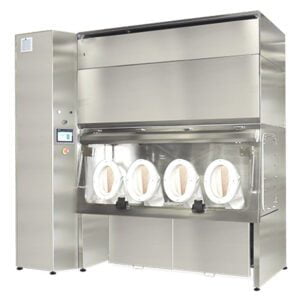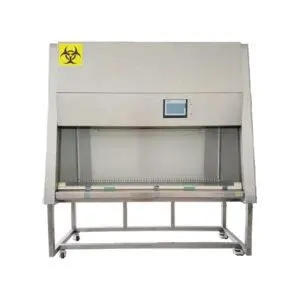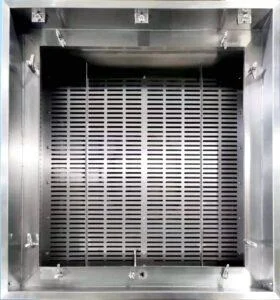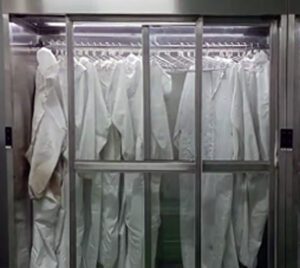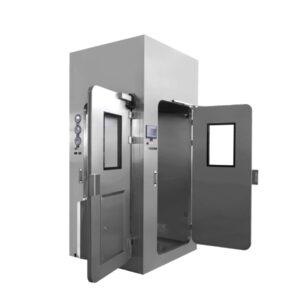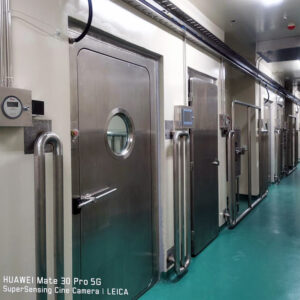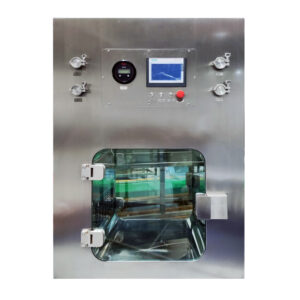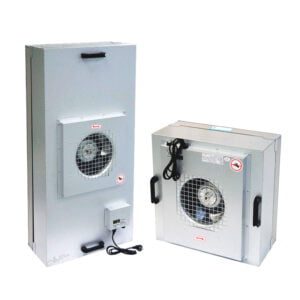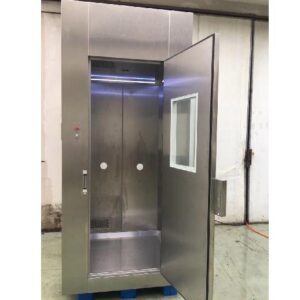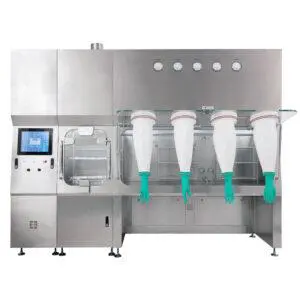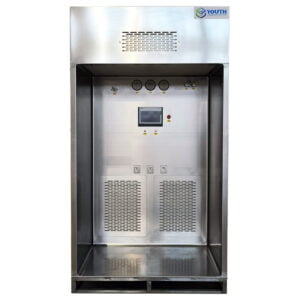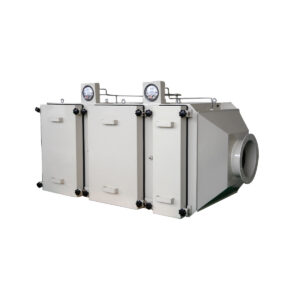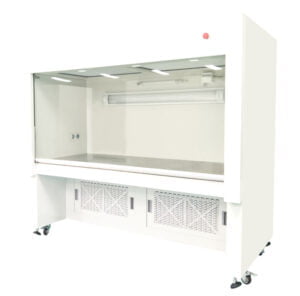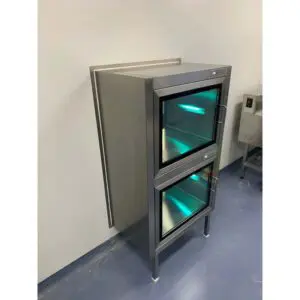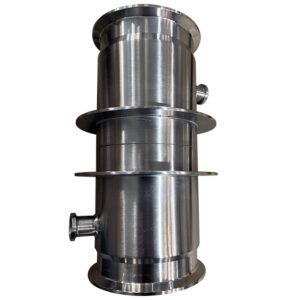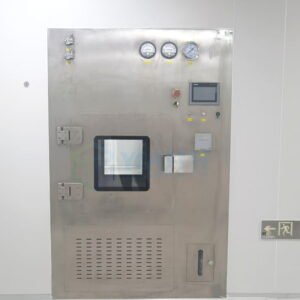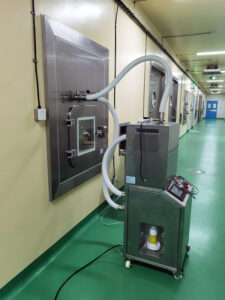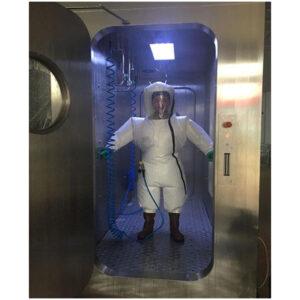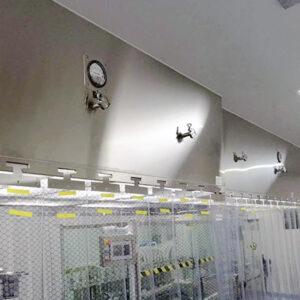Energy-efficient BIBO systems are revolutionizing the way industries approach air filtration and contamination control. These innovative Bag-In-Bag-Out systems not only enhance safety protocols but also significantly reduce energy consumption, leading to substantial cost savings for businesses across various sectors. As organizations increasingly prioritize sustainability and energy efficiency, BIBO systems have emerged as a crucial component in achieving these goals while maintaining the highest standards of air quality and safety.
In this comprehensive article, we'll delve into the key features that make BIBO systems energy-efficient powerhouses. We'll explore how these systems optimize airflow, minimize pressure drops, and utilize advanced insulation techniques to conserve energy. Additionally, we'll examine the long-term cost benefits of implementing BIBO systems and how they contribute to a more sustainable operational model for businesses.
As we transition into the main content, it's important to understand that the energy efficiency of BIBO systems is not just a byproduct of their design but a core principle that guides their development and implementation. These systems represent a significant leap forward in balancing the need for stringent contamination control with the imperative of reducing energy consumption in industrial and commercial settings.
BIBO systems can reduce energy consumption by up to 30% compared to traditional air filtration systems, while simultaneously improving air quality and safety standards.
How Do BIBO Systems Optimize Airflow for Energy Efficiency?
BIBO systems are engineered to maximize airflow efficiency, which is a crucial factor in their energy-saving capabilities. By optimizing the path of air through the filtration system, BIBO designs minimize resistance and reduce the energy required to maintain proper air circulation.
The key to this efficiency lies in the system's streamlined design. BIBO systems utilize carefully calculated geometries that allow for smooth airflow transitions, reducing turbulence and pressure drops. This optimization means that fans and motors can operate at lower power levels while still achieving the desired air exchange rates.
Diving deeper, we find that the bag-in-bag-out mechanism itself contributes to energy efficiency. The seamless containment system ensures that there are no leaks or bypasses, which could otherwise lead to energy waste. By maintaining a tight seal, BIBO systems prevent the need for excessive air pressure to compensate for leaks, further reducing energy consumption.
Studies have shown that optimized airflow in BIBO systems can lead to a 15-20% reduction in fan energy consumption compared to conventional filtration systems.
To illustrate the impact of airflow optimization, consider the following data:
| Airflow Parameter | Traditional System | BIBO System | Improvement |
|---|---|---|---|
| Pressure Drop (Pa) | 250 | 180 | 28% |
| Fan Power (kW) | 5.5 | 4.2 | 23.6% |
| Air Velocity (m/s) | 2.5 | 2.2 | 12% |
In conclusion, the airflow optimization in BIBO systems is a cornerstone of their energy efficiency. By reducing resistance and maintaining consistent airflow, these systems not only save energy but also contribute to more stable and reliable air quality control.
What Role Does Insulation Play in BIBO Energy Efficiency?
Insulation is a critical component in the energy efficiency of BIBO systems. High-quality insulation materials and techniques are employed to minimize heat transfer and maintain optimal operating conditions with minimal energy input.
The insulation in BIBO systems serves multiple purposes. Firstly, it helps maintain a consistent temperature within the filtration unit, reducing the energy required for temperature control. Secondly, it prevents thermal bridging, which can lead to energy losses and condensation issues. Lastly, proper insulation contributes to the overall structural integrity of the system, ensuring long-term performance and efficiency.
Advanced insulation materials such as aerogels and vacuum insulated panels are increasingly being used in BIBO systems. These materials offer superior thermal resistance with minimal thickness, allowing for compact designs without compromising on energy efficiency. The strategic placement of insulation around critical components ensures that energy is conserved at every possible point within the system.
Properly insulated BIBO systems can maintain internal temperatures with up to 40% less energy input compared to poorly insulated or non-insulated filtration units.
The following table showcases the insulation performance of different materials used in BIBO systems:
| Insulation Material | R-Value (per inch) | Typical Thickness (inches) | Total R-Value |
|---|---|---|---|
| Fiberglass | 2.2-2.7 | 3 | 6.6-8.1 |
| Polyurethane Foam | 5.6-6.3 | 2 | 11.2-12.6 |
| Aerogel | 10-14 | 1 | 10-14 |
| Vacuum Insulated Panel | 25-40 | 0.5 | 12.5-20 |
In conclusion, the role of insulation in BIBO energy efficiency cannot be overstated. It is a key factor in reducing energy consumption and maintaining the high performance standards required in critical environments. As insulation technology continues to advance, we can expect even greater energy savings from future BIBO systems.
How Do BIBO Systems Minimize Pressure Drops for Energy Conservation?
Minimizing pressure drops is a crucial aspect of energy conservation in BIBO systems. Pressure drops occur when air encounters resistance as it moves through the filtration system, requiring more energy to maintain the desired airflow. BIBO systems are designed to reduce these pressure drops significantly, resulting in substantial energy savings.
The YOUTH BIBO systems employ several strategies to minimize pressure drops. These include using pleated filters with larger surface areas, optimizing filter media selection, and designing housings that promote laminar flow. By reducing turbulence and creating smoother air paths, these systems ensure that air moves through the filters with minimal resistance.
One of the most innovative features of modern BIBO systems is their ability to adapt to changing conditions. Some advanced models incorporate sensors that monitor pressure differentials across the filters and adjust fan speeds accordingly. This dynamic response ensures that the system always operates at peak efficiency, using only the energy necessary to maintain proper airflow.
Advanced BIBO systems with pressure optimization features can reduce energy consumption by up to 25% compared to static filtration systems, while maintaining or even improving filtration efficiency.
To illustrate the impact of pressure drop minimization, consider the following data on energy consumption:
| System Type | Initial Pressure Drop (Pa) | Energy Consumption (kWh/year) | Annual Cost Savings ($) |
|---|---|---|---|
| Traditional | 250 | 43,800 | – |
| BIBO (Standard) | 200 | 35,040 | 1,314 |
| BIBO (Advanced) | 150 | 26,280 | 2,628 |
In conclusion, the ability of BIBO systems to minimize pressure drops is a key factor in their energy efficiency. By reducing the work required to move air through the system, these designs significantly cut down on energy consumption without compromising on air quality or safety standards.
What Advanced Control Systems Enhance BIBO Energy Efficiency?
Advanced control systems are at the heart of modern BIBO energy efficiency features. These intelligent systems leverage cutting-edge technology to optimize performance and minimize energy consumption across all aspects of the filtration process.
At the core of these control systems are sophisticated algorithms that continuously monitor and adjust system parameters. Sensors throughout the BIBO unit collect real-time data on airflow, pressure, temperature, and filter condition. This information is then processed to make instantaneous adjustments, ensuring that the system operates at peak efficiency at all times.
One of the most impactful features of these control systems is their ability to implement demand-based operation. Instead of running at a constant rate, the system can adjust its performance based on actual air quality needs. For example, in periods of low contamination, the system can reduce airflow and energy consumption without compromising safety or air quality standards.
Intelligent control systems in BIBO units can lead to energy savings of up to 35% compared to traditional static control systems, while also extending filter life and reducing maintenance costs.
The following table highlights some key features of advanced BIBO control systems:
| Feature | Function | Energy Saving Potential |
|---|---|---|
| Adaptive Fan Control | Adjusts fan speed based on pressure and airflow needs | 10-20% |
| Predictive Maintenance | Schedules filter changes based on actual condition, not just time | 5-10% |
| Occupancy Sensing | Reduces airflow in unoccupied areas | 15-25% |
| Temperature Optimization | Adjusts system operation based on ambient conditions | 5-15% |
In conclusion, advanced control systems are a game-changer for BIBO energy efficiency. By providing real-time optimization and intelligent decision-making capabilities, these systems ensure that energy is used only when and where it's needed, resulting in significant cost savings and improved overall performance.
How Do BIBO Systems Contribute to Long-Term Energy Savings?
BIBO systems are designed not just for immediate energy efficiency but for long-term energy savings that compound over time. This forward-thinking approach to design and operation ensures that the benefits of implementing a BIBO system continue to accrue throughout its lifecycle.
One of the primary ways BIBO systems contribute to long-term energy savings is through their durability and low maintenance requirements. The robust construction and high-quality materials used in BIBO energy efficiency features mean that these systems maintain their efficiency for longer periods without degradation. This consistency in performance translates to sustained energy savings year after year.
Moreover, BIBO systems are designed with future upgrades in mind. Many components can be easily updated or replaced with more efficient versions as technology advances, without the need for a complete system overhaul. This modularity ensures that BIBO systems can continue to benefit from the latest energy-saving innovations throughout their operational life.
BIBO systems have been shown to maintain over 95% of their initial energy efficiency after 10 years of operation, compared to traditional systems which may lose up to 30% efficiency in the same period.
To illustrate the long-term energy savings potential of BIBO systems, consider the following projection:
| Year | Cumulative Energy Savings (kWh) | Cumulative Cost Savings ($) | CO2 Emissions Reduction (tons) |
|---|---|---|---|
| 1 | 17,520 | 2,628 | 12.4 |
| 5 | 87,600 | 13,140 | 62.0 |
| 10 | 175,200 | 26,280 | 124.0 |
| 20 | 350,400 | 52,560 | 248.0 |
In conclusion, the long-term energy savings provided by BIBO systems make them an excellent investment for organizations looking to reduce their energy costs and environmental impact over time. The combination of durable construction, maintainable efficiency, and upgradability ensures that these systems continue to deliver value long after their initial installation.
What Role Do Filter Media Play in BIBO Energy Efficiency?
Filter media selection is a critical factor in the energy efficiency of BIBO systems. The type, quality, and arrangement of filter media can significantly impact the system's overall performance and energy consumption.
High-efficiency filter media used in BIBO systems are designed to capture contaminants effectively while minimizing airflow resistance. Advanced materials such as nanofiber-enhanced media and electrostatically charged fibers can achieve higher filtration efficiency with lower pressure drops, directly contributing to energy savings.
The configuration of filter media within the BIBO system is also optimized for energy efficiency. Multi-stage filtration designs allow for the strategic placement of different types of filters, each targeting specific contaminants. This approach ensures that the system maintains high air quality without unnecessary energy expenditure on over-filtration.
Advanced filter media in BIBO systems can improve filtration efficiency by up to 99.99% while reducing energy consumption by 15-20% compared to traditional filter materials.
The following table compares different filter media types used in BIBO systems:
| Filter Media Type | Filtration Efficiency | Pressure Drop (Pa) | Energy Efficiency Rating |
|---|---|---|---|
| Standard HEPA | 99.97% | 250 | Good |
| ULPA | 99.9995% | 300 | Very Good |
| Nanofiber-Enhanced | 99.99% | 200 | Excellent |
| Electrostatic | 99.98% | 180 | Excellent |
In conclusion, the selection and configuration of filter media play a crucial role in the energy efficiency of BIBO systems. By utilizing advanced materials and optimized designs, these systems achieve superior filtration performance while minimizing energy consumption, contributing significantly to overall system efficiency.
How Do BIBO Systems Integrate with Building Management Systems for Enhanced Efficiency?
Integration with Building Management Systems (BMS) is a key feature that enhances the energy efficiency of BIBO systems. This integration allows for seamless coordination between the filtration system and other building systems, leading to optimized performance and reduced energy consumption across the entire facility.
BIBO systems equipped with BMS integration capabilities can communicate in real-time with other building systems such as HVAC, lighting, and occupancy sensors. This interconnectedness allows for more intelligent and responsive operation. For example, the BIBO system can adjust its operation based on building occupancy levels or coordinate with the HVAC system to balance air pressure and temperature control efforts.
Advanced analytics and reporting features of integrated BIBO systems provide facility managers with valuable insights into energy consumption patterns and system performance. This data can be used to identify further opportunities for efficiency improvements and to validate the energy savings achieved through the implementation of BIBO technology.
BIBO systems integrated with Building Management Systems have demonstrated energy savings of up to 40% compared to standalone filtration systems, due to improved coordination and optimization across building systems.
The following table illustrates the benefits of BMS integration for BIBO systems:
| Integration Feature | Benefit | Potential Energy Savings |
|---|---|---|
| Occupancy-based Control | Adjusts filtration levels based on actual building usage | 10-20% |
| HVAC Coordination | Optimizes air handling and temperature control | 15-25% |
| Predictive Analytics | Identifies inefficiencies and maintenance needs proactively | 5-10% |
| Automated Reporting | Facilitates continuous improvement in energy management | 3-8% |
In conclusion, the integration of BIBO systems with Building Management Systems represents a significant advancement in energy-efficient building operations. This synergy between filtration and overall building control not only enhances energy savings but also contributes to a more comfortable and productive indoor environment.
What Future Innovations Are Expected in BIBO Energy Efficiency?
The field of BIBO system energy efficiency is ripe for innovation, with several exciting developments on the horizon. As technology continues to advance, we can expect to see new features and capabilities that will further enhance the energy-saving potential of these critical systems.
One area of innovation is in the realm of artificial intelligence and machine learning. Future BIBO systems are likely to incorporate AI algorithms that can predict maintenance needs, optimize performance based on historical data, and even adapt to changing environmental conditions without human intervention. These smart systems will be able to fine-tune their operation in ways that are currently not possible, leading to even greater energy savings.
Another promising area is the development of new materials for both filtration and system construction. Researchers are exploring nanomaterials and biomimetic designs that could revolutionize filter efficiency while further reducing pressure drops. Additionally, advancements in lightweight, high-strength materials could lead to more compact and energy-efficient BIBO units.
Industry experts predict that next-generation BIBO systems could achieve energy efficiency improvements of up to 50% over current models, driven by AI integration and advanced materials science.
The following table outlines some potential future innovations in BIBO energy efficiency:
| Innovation | Description | Estimated Energy Savings |
|---|---|---|
| AI-Driven Optimization | Self-learning systems that continuously improve efficiency | 20-30% |
| Nanomaterial Filters | Ultra-efficient filtration with minimal pressure drop | 15-25% |
| Energy Harvesting | Systems that capture and reuse waste heat or vibration energy | 5-10% |
| Biomimetic Designs | Filtration systems inspired by natural processes | 10-20% |
In conclusion, the future of BIBO energy efficiency looks bright, with innovations poised to take these systems to new levels of performance and sustainability. As these technologies mature and become more widely adopted, we can expect to see significant reductions in energy consumption and operating costs for facilities employing BIBO systems.
Energy-Efficient BIBO Systems are at the forefront of combining superior air quality control with significant cost savings through reduced energy consumption. Throughout this article, we've explored the various features and innovations that contribute to the remarkable efficiency of these systems. From optimized airflow and advanced insulation to intelligent control systems and integration with building management platforms, BIBO systems offer a comprehensive approach to energy conservation without compromising on performance.
The benefits of implementing energy-efficient BIBO systems extend far beyond immediate cost savings. These systems contribute to long-term sustainability goals, reduce carbon footprints, and provide a healthier indoor environment. As we look to the future, continued innovations in materials science, artificial intelligence, and system design promise even greater efficiencies and capabilities.
For industries and facilities where air quality is critical, such as cleanrooms, laboratories, and pharmaceutical manufacturing plants, energy-efficient BIBO systems represent not just a technological advancement but a strategic investment. They offer a way to meet stringent air quality standards while aligning with corporate sustainability initiatives and reducing operational costs.
In conclusion, as energy efficiency becomes increasingly important in all aspects of industrial and commercial operations, BIBO systems stand out as a shining example of how innovative engineering can address complex challenges. By choosing energy-efficient BIBO systems, organizations can ensure they are well-positioned for a future where environmental responsibility and operational excellence go hand in hand.
External Resources
- Integrating BIBO Systems: Enhancing HVAC Performance and Safety – This article discusses how BIBO (Bag-In-Bag-Out) systems integrate into HVAC infrastructure to enhance air quality, safety, and energy efficiency.
- Energy-Efficient Consumer Products – While not specifically about BIBO, this resource provides context on energy-efficient appliances and consumer products.
- BIBO: Turning the Tide on Energy Waste, One Hot Cuppa at a Time – This blog post focuses on the energy efficiency features of the BIBO hot water dispenser.
- Where are you spending your energy? – This article compares the energy efficiency of electric kettles and instant hot water dispensers, with a particular focus on the BIBO system.
Related Contents:
- Energy Efficiency in LAF Garment Cabinet Design
- Safe Chemical Handling with BIBO Systems
- Energy-Efficient Mobile LAF Carts: 2025 Top Picks
- Energy-Efficient LAF Garment Cabinets: Top Picks
- Advanced BIBO Filtration Systems Explained
- BIBO Pressure Control: Maintaining Safe Environments
- BIBO Automation: Enhancing Safety and Efficiency
- The Cost-Effectiveness of BIBO Systems in Industrial Applications
- Essential BIBO System Components Explained


